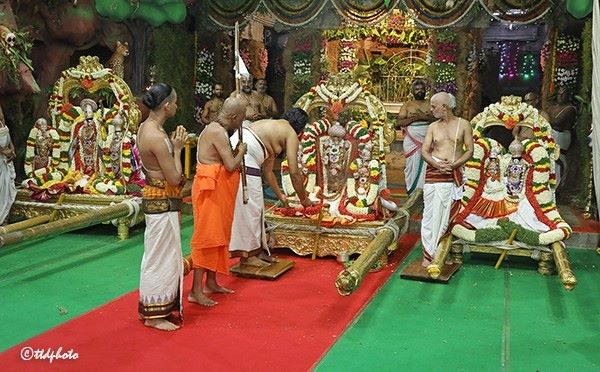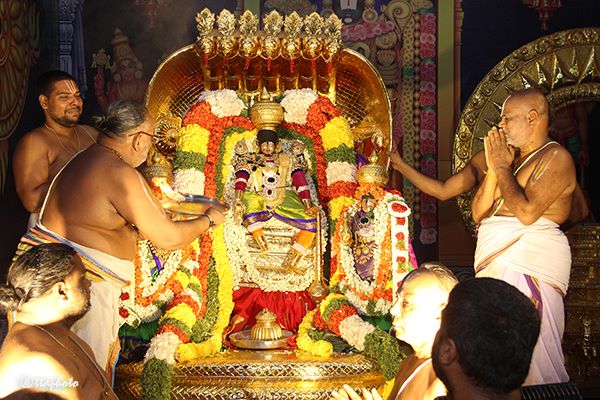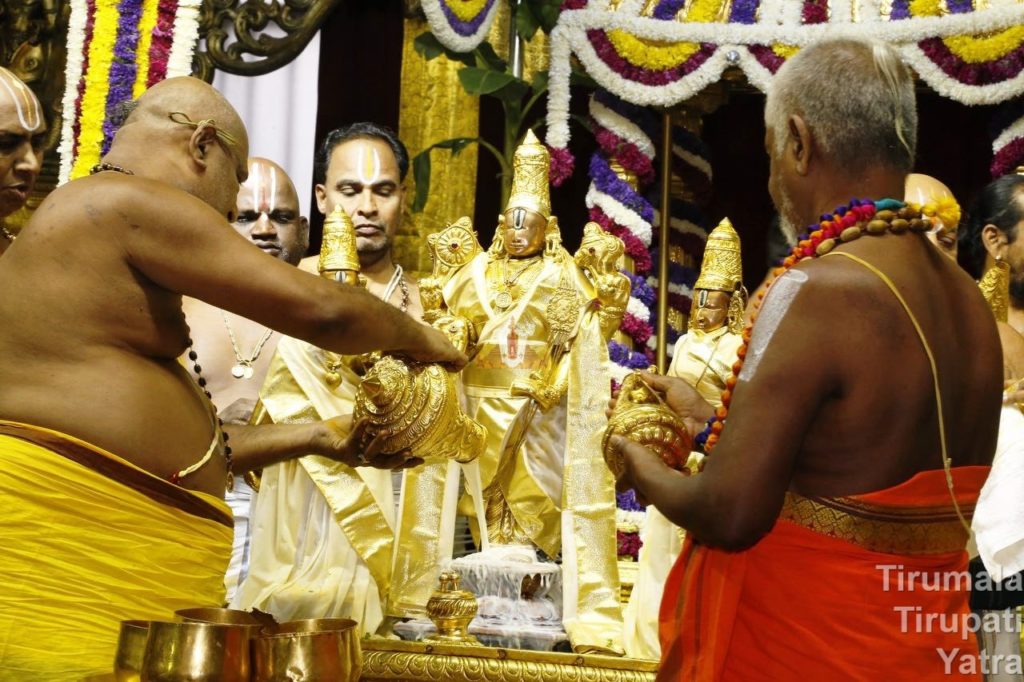Everything you need to know about Vasanthotsavam In a year, many utsavams are celebrated according to Vaikanasa agama, in Tirumala. Every celebration has its importance and significance besides its glory. One of such utsavam is Vasanthotsavam. After the completion of the Sri Padmavathi Srinivasa Parinaya festival, Vasanthotsavam is being celebrated. Vasanthotsavam is the combination of Read More
Tag: Snapana Tirumanjanam
Snapana Tirumanjanam – Snapanam (Sacred Bath) is performed to the Utsava deities after Homam. In the Homam Ritual, for the purification of Pavitram garlands and Yagasala, Vaasthu Homa is performed.
Sakshatkara Vaibhavotsavam – Srinivasa Mangapuram
Sakshatkara Vaibhavotsava Utsavam at Srinivasa Mangapuram Temple The T.T.D. performs Various utsavas every year on different occasions to Sri Kalyana Venkateswara Swami in Srinivasamangapuram. One among them is the annual ‘Sakshatkara Vaibhavotsava utsavam’. This utsavam is conducted for three days in Ashadamasam. Legend There is an interesting Sthala Purana behind the celebrations of the Annual Read More
Pavitrotsavams in Tirumala
Reason for Pavitrotsavams As per the Vedic tradition, one is not supposed to enter the temple with jatashoucham (impurity due to the birth of offspring) and mrithashoucham (impurity due to death of close relatives). But sometimes, this rule is violated knowingly or unknowingly by the tourists and staff. The purification ceremony to dispel the evil of Read More



